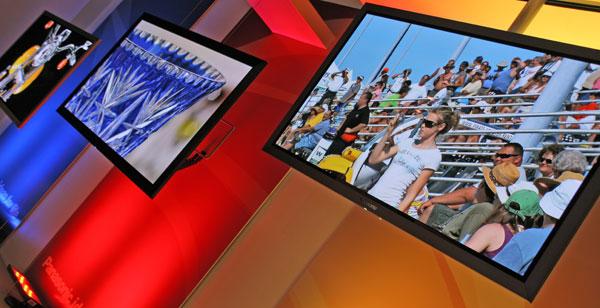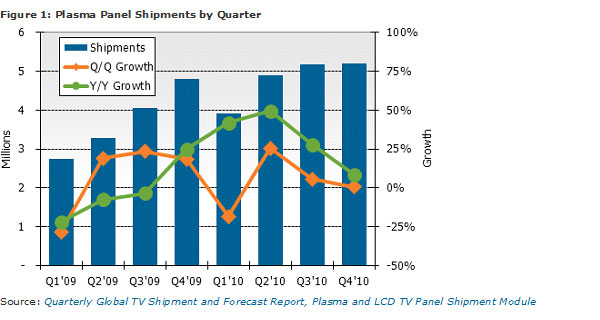Good News for Plasma


According to the study, plasma makers shipped 19.1 million panels worldwide in 2010, including a record 5.2 million in the fourth quarter, which represents a 29-percent increase in unit shipments and an 11-percent increase in revenue compared with 2009. Panasonic is still in the lead with 40.7 percent market share (down from 43.3), followed by Samsung with 33.7 percent (up from 31.7) and LG with 23.3 percent (up slightly from 23.1).
"This is a surprising result," says the DisplaySearch report, "as weak economic conditions resulted in several plasma players exiting the plasma TV business in 2009, and plasma faced a renewed threat from LCD TVs with the improvements from LED backlights narrowing the performance gap with plasma." On the other hand, the trend toward LED-illuminated LCDs also slowed the decline in average LCD prices, which allowed plasma to remain more competitive than it otherwise might have.
Another factor is probably the rise of 3D, which many observersincluding mefind to look better on plasma than LCD. "While 3D has not played a big role in the growth of plasma shipments, it has helped to support plasma TV in the competition with LCD TV," says Ken Park, DisplaySearch Korea TV market research senior analyst. "With 3D functionality, plasma can reposition itself as a lasting technology in the TV industry. In fact, plasma TV brands are entering 2011 with 3D across their product portfolios, from 42-inch HD to 152-inch."
So say what you will about plasma's lower light level or shiny screen or image retentionall of which can be easily overcome in most cases without other side effectsthe rumors of plasma's death are greatly exaggerated, and I'm very glad there seems to be plenty of life left in the old gal.
























































